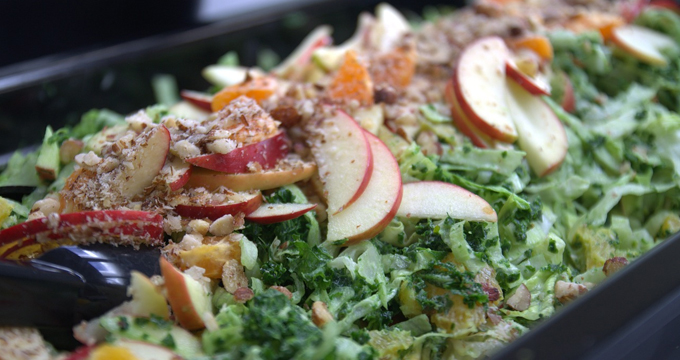
This is a guest post by my friend Martín Caicedo. A version of this piece was published in Spanish at El Pensador Sereno.
Some time ago, I was talking with college friends, and one of them told me a guy from Anthropology claimed, to justify his vegan diet, that the human being (or his ancestors) was originally vegetarian, and then, in the course of civilizations, became omnivore. We, Biologists, were, puzzled by his theory.
Because for us, it was unfounded. A vegan diet is physiologically insufficient and dangerous for the human being. I won’t focus on health aspects, because the B12 vitamin supplements necessity (coming almost entirely from animals) on a vegan diet should be suspicious, and there is already evidence of such damage, particularly on children. What I am going to do, as a Biologist, is to explain the details about how the human being is anatomically disabled in order to be strictly herbivore.
There is a critical element in the herbivorous diet among animals: cellulose. This polysaccharide is the cell wall material, thus providing its characteristic hardness and strength. Access to the rich nutrients from the vegetal cells (ignoring the obvious proteic deficiency) is only made possible by breaking the cellulose. And this can’t be done by simply chewing, or even cooking the vegetables. There is an enzyme responsible for degrading cellulose during digestion: cellulase.
And this is the building block that debunks the “theory” of the aforementioned Anthropologist. Only some termites and silverfish can produce the cellulase needed to digest the vegetal material: no other animal can do that. Neither cows, nor horses or goats, nor any other herbivore, vertebrate or invertebrate, can do it on their own. And certainly not an omnivore such as Homo sapiens.
The reader might be asking: how do herbivores digest plants? Well, they have two important physiological traits: a long digestive tract, allowing a long digestion of plant matter (which also increases the enzymatic attack), and symbiotic microorganisms that produce cellulose, like bacteria. For example, the first stomach of ruminants (the rumen) is full of anaerobic microorganisms that ferment the vegetal fiber, i.e., cellulose. Of course, animal rumination facilitates transport of the bolus through the digestive tract.
A herbivore mammal has three anatomical and physiological adaptations, by which it can be recognized: molars with wide and flat cusps (which helps grind plant matter), a long digestive tract, often with an intestinal caecum, and cellulose-degrading gut microorganisms. Those traits are found in many groups, from horses to primates.
Omnivores, meanwhile, are bad plant food processors because they lack both a gut with the required length or a caecum, and cellulolytic microorganisms. Those with a mostly herbivorous diet (for example, bears and pigs) often have wide molars to grind vegetables but, beyond that, they don’t have other adaptations for a strictly vegetable diet. That’s why the panda, which diet is almost 99% bamboo, spends more than half of the day feeding; it is a low-protein diet, and they can’t take full advantage of it because they can’t digest it properly (it will eat carrion or insects in order to complement). Moreover, the reader should know that if he/she swallows a whole corn seed, without chewing it, it will come out whole, if there is no breaking of the outer layer the content can’t be accessed.
Back to humans. An anatomical and physiological review should be enough to prove that the human being is omnivore, instead of a strictly herbivore or a pure carnivore. For example, archaeological evidence of hunter-gatherers shows that primitive human diet was rich in meat. Nevertheless, the presence of amylase —an enzyme that degrades carbohydrates such as starch— in saliva shows that our diet included a vegetable : that’s why we can digest seeds, as long as they are thoroughly cooked and properly chewed. Furthermore, short canines are typical of omnivore primates such as chimpanzees; herbivores like gorillas and geladas have longer canines, despite their herbivorous diet, for they are useful warning signs. Finally, the small size of the mandible and the chewing muscles show that human diet wasn’t mainly vegetal; compare the human skull with a that of a gorilla, a herbivore ape.
This analysis is enough to show that there’s no reason to think that human beings were vegetarian in the past. Obviously, there are evidences that our ancestors had to eat more vegetables (the appendix) but they’re distant ancestors, millions of years away from us, and they didn’t even belong to the Homo genus. A strictly meat diet is as bad as an only veggies diet. It’s the omnivorous diet (along with cooking of food) that allowed us to develop our intellectual capacity, survive harsh environmental conditions, and it is its proper balance which gives us good health.
After this, anyone who believes that vegetarianism and veganism are excellent for health should reconsider their position and look for more sound arguments. If there’s any.
(image: Pixabay)
